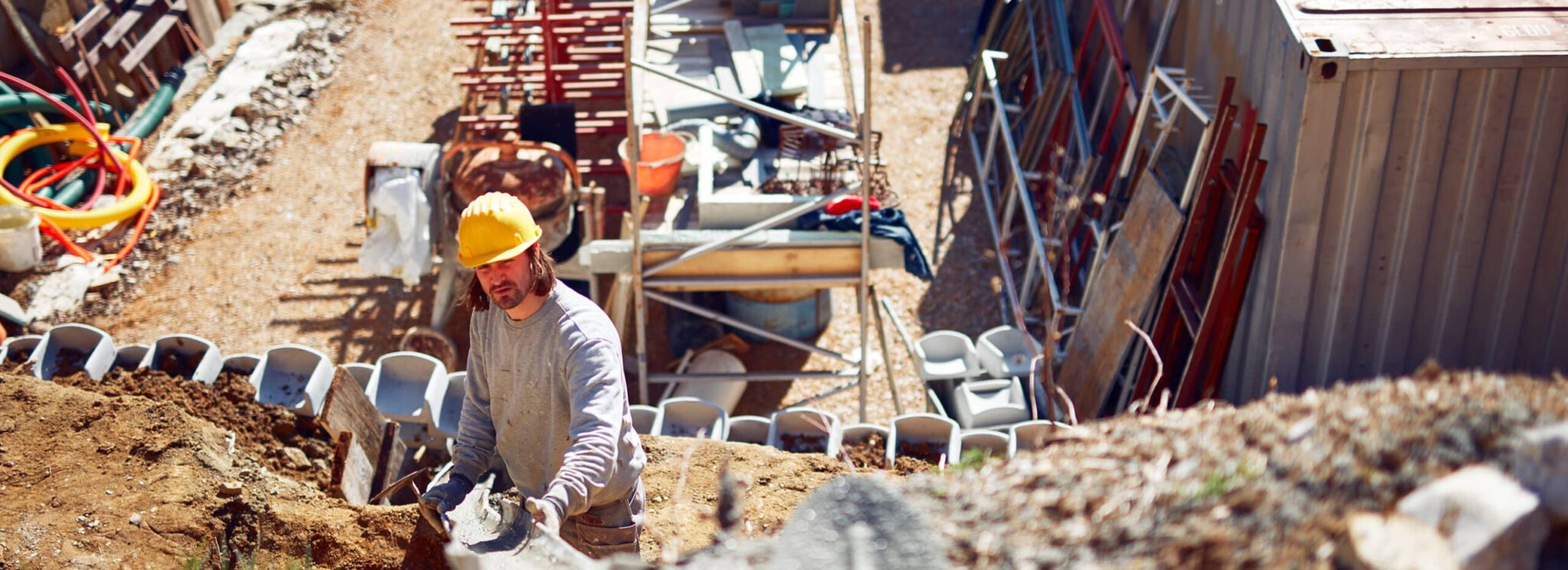What’s your construction site security strategy? Construction sites are vulnerable to equipment theft, trespassing, crane climbers, and vandalism
because of their being out in the open. Construction has one of the highest rates of injuries and fatalities. That’s why it’s critical to have a construction site security strategy.
Consider these numbers:
- The average value of each stolen heavy equipment is $30,000 [National Equipment Registry]
- The average value of stolen cargo is $153,000 [CargoNet]
- The average work-related injury costs $39,000 [National Safety Council]
- More than $1 billion worth of copper is stolen every year [Department of Energy]
You can’t park heavy equipment in a garage. You can’t secure expensive tools and machinery inside a building.
Here are seven things to do to create a construction site security strategy to safeguard your assets and protect your workers.
1. Conduct a Construction Site Security Risk Analysis
A risk analysis identifies potential security risks. Review the construction site for vulnerabilities for trespassing, theft (internal and external), safety risks, and other issues. Remember to highlight your strengths too.
Draft the layout of the property and mark any existing security measures. The risk analysis will help you determine what construction site security measures to implement.
2. Create a Construction Site Security Plan
Every construction site project has a similar process that you can use to create a repeatable process and checklist. This ensures you never skip a step for each new project.
Add the following to the construction site security plan:
- Background checks on all prospective employees (ask your vendors to do the same.)
- Process for tracking visitors and vendors on the jobsite.
- Traffic map showing the flow of vehicles and workers.
- Develop and post a list of emergency contacts, including local emergency services
3. Use Lighting Afterhours
A darkened site tempts thieves and trespassers to explore the construction site. Having lights on the site when no one is on the property acts as a deterrent. Trespassers don’t want the spotlight (the risk of being visible) on them, so they pass on your property.
4. Invest in Uniforms
A significant amount of theft happens during the day. Implementing uniforms is one method of identifying who does not work on the jobsite. It ensures workers wear the proper clothing for the season and job.
Add your company logo to their uniforms as it turns them into a marketing tool. They may wear it outside of the jobsite and passers-by can see the company name and think of you for construction. It also builds camaraderie among employees to help them feel a part of a team.
5. Develop a Cargo Theft Prevention Process
Cargo theft is a huge problem especially without a process to curb it. NER’s report indicates no type of location is safe from theft. Every construction site is a potential target. More than half of the thefts occur on “other premises.” Construction sites fall under that category.
NER says most thefts occur on construction sites with little or no security. For every 100 items stolen, only 20 find their way back to their owners.
Construction companies can help reduce cargo theft by taking these steps:
- Keep an accurate list of equipment with their serial numbers or PIN.
- Register all serial numbers with NER’s database.
- Analyze security clauses on freight contracts.
- Create a contractor selection and management process.
- Develop an evaluation process to approve and monitor suppliers.
Unfortunately, thieves have gotten sophisticated. They know how to fake tags and identities. To deter cargo theft, make it a rule that trucking companies call 24 hours before picking up cargo.
The call should request the following information:
- Driver’s name
- Carrier’s name
- Truck and trailer numbers
- Insurance information
After the driver arrives, confirm the information matches. That’s step one. Protect your cargo by photographing the driver, truck, and bill of lading.
6. Install Fencing Around the Property
The advantage of having a fence around the property is that it can create a single-entry point. It decreases the risk of trespassing on your property. You’ll also have greater control over managing deliveries and pick-ups.
While people can climb or cut fences, you can add another barrier with barbed wires. The more barriers you put up, the greater the likelihood trespassers will go elsewhere.
7. Invest in Remote Video Surveillance
A UNC Charlotte Study has found that more than 80 percent of thieves check for visible security like an alarm or video surveillance before breaking in. Hence, one of the greatest deterrents of crime that delivers a fast ROI is with video surveillance. Almost half of employers use it to deter theft and vandalism per an American Management Association (AMA) and ePolicy Institute survey.
The advantage video surveillance has over security guards and other security systems is that it lets companies monitor their entire property all at once. Security guards can only catch what goes on in the sector they patrol. Additionally, guards cost more than video surveillance and that cost multiples with every person you hire. What’s more, the visibility of the cameras acts as a deterrent especially when you post signs stating the area is under surveillance.
To implement video surveillance, start by inviting security consultants to survey your property and requirements. They will customize a video surveillance system that meets your needs. For instance, do you need around-the-clock monitoring or night-time only monitoring?
You have many options in remote video monitoring such as:
- Mobile Video Surveillance: Built for speedy deployment and can be mounted on almost any pole or flat surface.
- System health check: Checks to see if your system works properly.
- Thermal imaging: Sees what the human eye and standard cameras can’t see.
- Video analysis: Reviews hours of video footage to investigate issues.
- Crane Climbing Detection: Protect crane shafts from suspicious activity.
Although trained operators are not on site, they can see trespassers approaching the property and act before anything happens. The monitoring operator can issue a warning on the audio speaker system. This works some of the time. When gutsy trespassers continue moving toward the property, the operator calls the police and keeps them updated on the suspects’ location.
To ensure your cameras can catch things, it’s critical to select the right equipment. Not all cameras can track the suspects’ movement. Not all cameras can identify license plates or faces. Not all cameras can handle extreme weather conditions that knock them out of commission.
Ask the security consultant about these features and how long they retain the recorded footage. Sometimes an incident that happens doesn’t come up until much later. Like a truck driver claiming the property scratched the truck. Trained analysts can review the footage to see if the scratch appeared before or after the truck entered the property.
Many other security solutions are reactive in that they catch things after they happen. Remote video surveillance, on the other hand, is a proactive solution. It offers the highest level of security for your property while reducing liability. Best of all, remote video surveillance can cost up 60 percent less than security guards.
Construction sites present many security challenges. The cost of not having security can hurt your bottom-line and business reputation. An effective construction site security strategy helps employees and visitors feel safer. It also protects your assets and helps to mitigate liability.
In summary, here’s what you need in a construction site security strategy:
- Construction site security analysis
- Construction site security plan
- After-hours lighting
- Uniforms
- Cargo theft prevention process
- Perimeter fencing
- Remote video surveillance
To learn more about construction security, pick up your free guide to securing your construction site or contact us.

